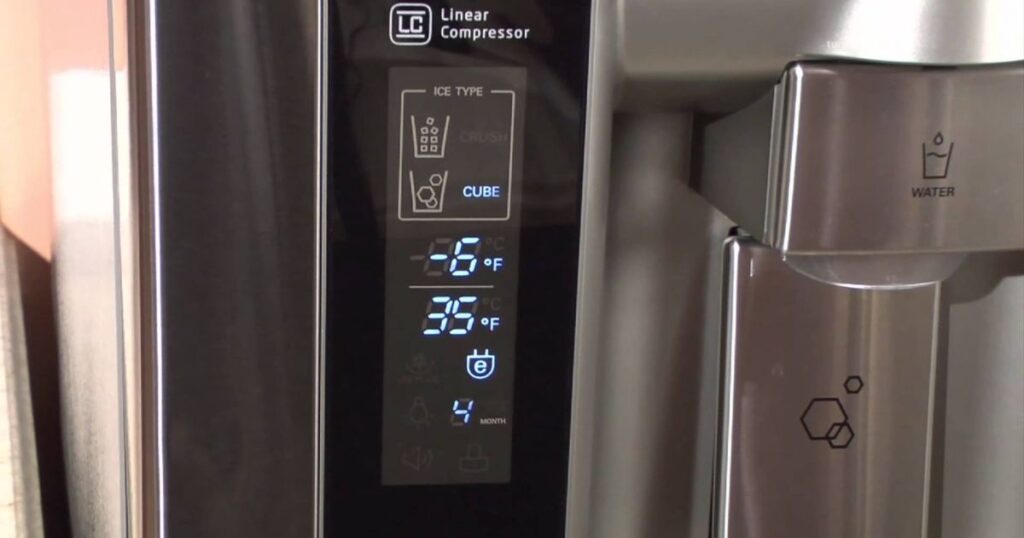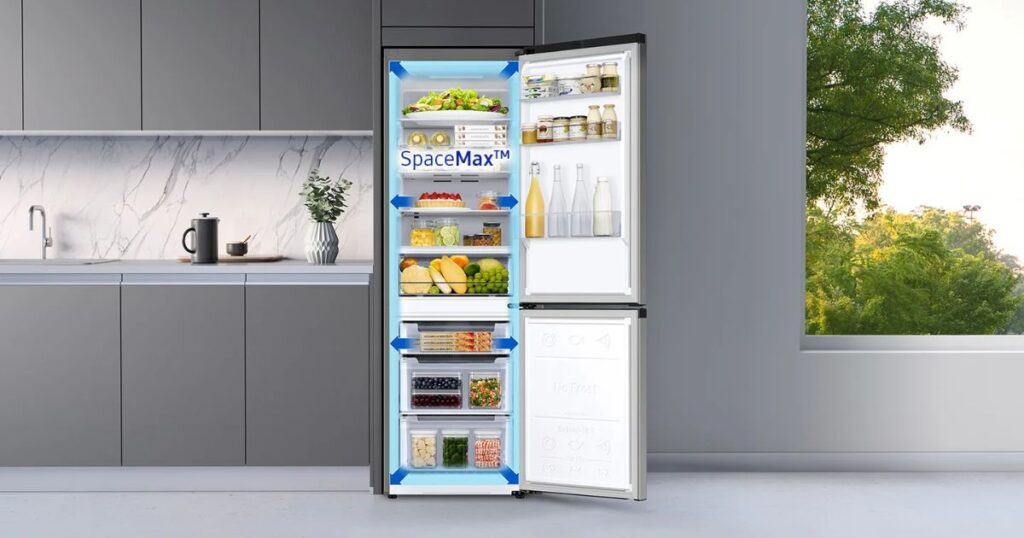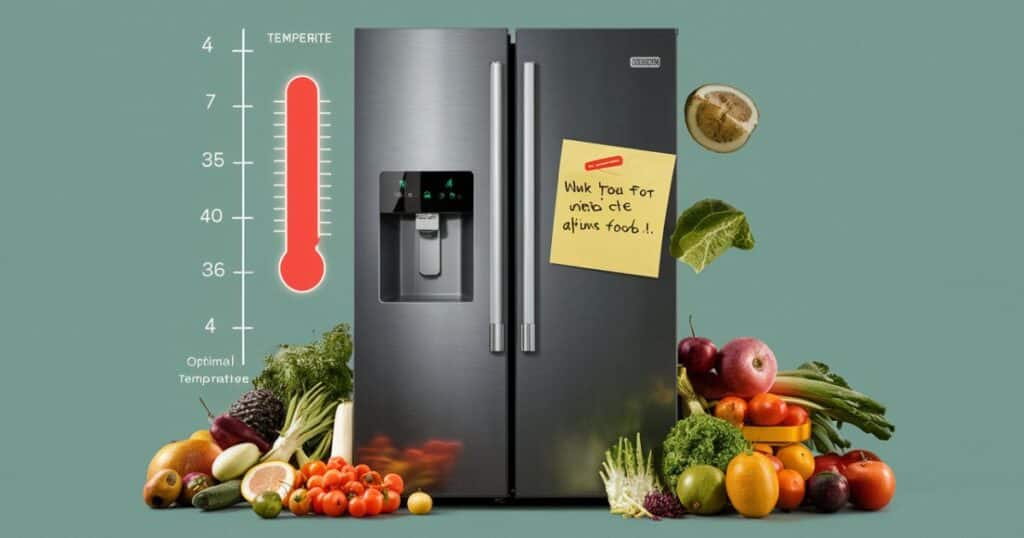Maintaining the correct temperature in your refrigerator is crucial for preserving the freshness and safety of your food.
However, many homeowners find themselves scratching their heads when it comes to interpreting the numbered settings on their fridge’s temperature dial. With settings ranging from 1 to 7 (or a similar scale), it’s natural to wonder, “What number should my fridge be on?”
In this comprehensive guide, we’ll decode the refrigerator number system, explore recommended temperatures, and provide practical tips to help you find the ideal setting for your fridge.
By understanding the factors that affect refrigerator temperature, you’ll be better equipped to keep your food fresh and prevent spoilage.
Decoding the Refrigerator Number System
The numbers on your refrigerator’s temperature control dial are not specific temperatures; instead, they represent the appliance’s cooling power. Higher numbers generally indicate colder settings, while lower numbers correspond to warmer settings. However, it’s essential to note that the actual temperatures associated with each number may vary across different refrigerator models and brands.
For example, on a 1-7 scale, setting 1 might maintain a temperature of around 40°F (4°C) in one model, while setting 1 on a different fridge could be slightly warmer or colder. This variation highlights the importance of consulting your refrigerator’s user manual for specific temperature information, if available.
Recommended Refrigerator Temperatures

According to the United States Food and Drug Administration (FDA), refrigerators should be kept at or below 40°F (4°C) to slow down bacterial growth and ensure food safety. Additionally, the freezer compartment should be set at 0°F (-18°C) or below to preserve frozen foods properly.
Maintaining these recommended temperatures is crucial for several reasons:
- Food Safety: Bacteria that cause foodborne illnesses thrive at temperatures between 40°F and 140°F (4°C and 60°C). Keeping your fridge at or below 40°F (4°C) minimizes the risk of bacterial growth.
- Food Freshness: Proper refrigeration slows down the natural spoilage process, extending the shelf life of perishable items like fruits, vegetables, dairy products, and meats.
- Quality Preservation: Cold temperatures help maintain the texture, flavor, and nutritional value of foods for a longer period.
It’s important to note that while colder temperatures may seem better for preserving food, setting your fridge too cold can have negative consequences, such as ice buildup and potential damage to internal components.
Read More About: Does Wickes Cut Wood? The Ultimate Guide to Wood Cutting Services
Factors Affecting Ideal Fridge Temperature

Several factors can influence the ideal temperature setting for your refrigerator:
- Ambient Temperature: In warmer climates or during hot summer months, your fridge may need to work harder to maintain the desired temperature. In these cases, you may need to adjust the setting to a slightly colder number.
- Door Openings: Frequent or prolonged door openings can cause the cold air to escape, forcing the refrigerator to work harder to cool down again. If you find yourself opening the fridge door frequently, a colder setting may be necessary.
- Food Quantity: A fully stocked refrigerator will require a colder setting to maintain the desired temperature compared to a lightly loaded one. More food means more thermal mass to cool down, affecting the overall temperature.
Using a Refrigerator Thermometer
While the numbered settings on your fridge’s dial provide a general guideline, the most accurate way to ensure your refrigerator is operating at the proper temperature is to use a dedicated refrigerator thermometer. These inexpensive devices take the guesswork out of the equation by providing a precise temperature reading.
To use a refrigerator thermometer effectively, follow these steps:
- Place the thermometer on a middle shelf, away from the door and air vents.
- Allow the thermometer to acclimatize for at least 24 hours before taking a reading.
- Check the temperature reading and adjust the dial accordingly to achieve the desired temperature range.
It’s essential to monitor the temperature regularly and make adjustments as needed, especially if you notice any changes in ambient conditions or food storage patterns.
Finding the Sweet Spot: Ideal Fridge Setting
While the ideal refrigerator temperature setting may vary based on the factors mentioned above, a good starting point is to set the dial to the manufacturer’s recommended setting or a midrange number, such as 3 or 4 on a 1-7 scale.
Here’s a general guideline for finding the ideal fridge setting:
- Start at the Midrange: Begin by setting the dial to the midpoint of the temperature range, typically around 3 or 4 on a 1-7 scale.
- Monitor with a Thermometer: Use a refrigerator thermometer to track the internal temperature over the next 24-48 hours.
- Adjust as Needed: If the temperature is too warm, increase the setting by one number. If it’s too cold, decrease the setting by one number. Repeat this process until you reach the desired temperature range.
It’s essential to be patient during this process, as it can take several hours for the temperature to stabilize after adjusting the settings.
If you find that the recommended midrange setting is not adequate for your needs, you may need to err on the colder side, especially if you live in a warm climate, frequently open the door, or store a large quantity of food. However, be cautious about setting the temperature too low, as this can lead to ice buildup, which can disrupt air circulation and potentially damage internal components.
Tips for Maintaining Optimal Fridge Temperature
In addition to finding the ideal temperature setting, there are several tips you can follow to help maintain optimal refrigerator performance:
- Limit Frequent Door Openings: Every time you open the fridge door, cold air escapes, and the appliance has to work harder to cool down again. Try to plan your trips to the fridge and close the door promptly after retrieving or storing items.
- Allow Hot Foods to Cool Before Storing: Placing hot foods directly into the fridge can raise the internal temperature, forcing the compressor to work overtime to cool everything down. Let hot dishes cool to room temperature before storing them.
- Keep the Fridge Well-Stocked (but not overcrowded): A well-stocked refrigerator helps maintain a consistent temperature, as the thermal mass of the food items acts as a buffer against temperature fluctuations. However, be careful not to overcrowd the fridge, as this can restrict air circulation and lead to uneven cooling.
- Clean the Condenser Coils: Dusty or clogged condenser coils can cause your refrigerator to work harder and less efficiently. Regularly clean the coils (typically located on the back or bottom of the appliance) to ensure optimal performance.
- Consider Replacing an Old Fridge: If your refrigerator is more than 10 years old, it may be time to consider replacing it with a newer, more energy-efficient model. Older appliances often struggle to maintain consistent temperatures and can be more prone to breakdowns and repairs.
Conclusion
Finding the ideal refrigerator temperature setting can be a bit of a balancing act, but it’s crucial for preserving the freshness and safety of your food. By understanding the factors that affect fridge temperature, using a dedicated thermometer, and making gradual adjustments, you can find the sweet spot that works best for your household.
Remember, the numbered settings on your fridge’s dial are just a starting point; the actual temperatures may vary. Be patient, monitor the internal temperature regularly, and don’t hesitate to adjust the settings as needed. With a little trial and error, you’ll be able to keep your food fresh and prevent spoilage, ensuring that every bite is as delicious and safe as possible.







